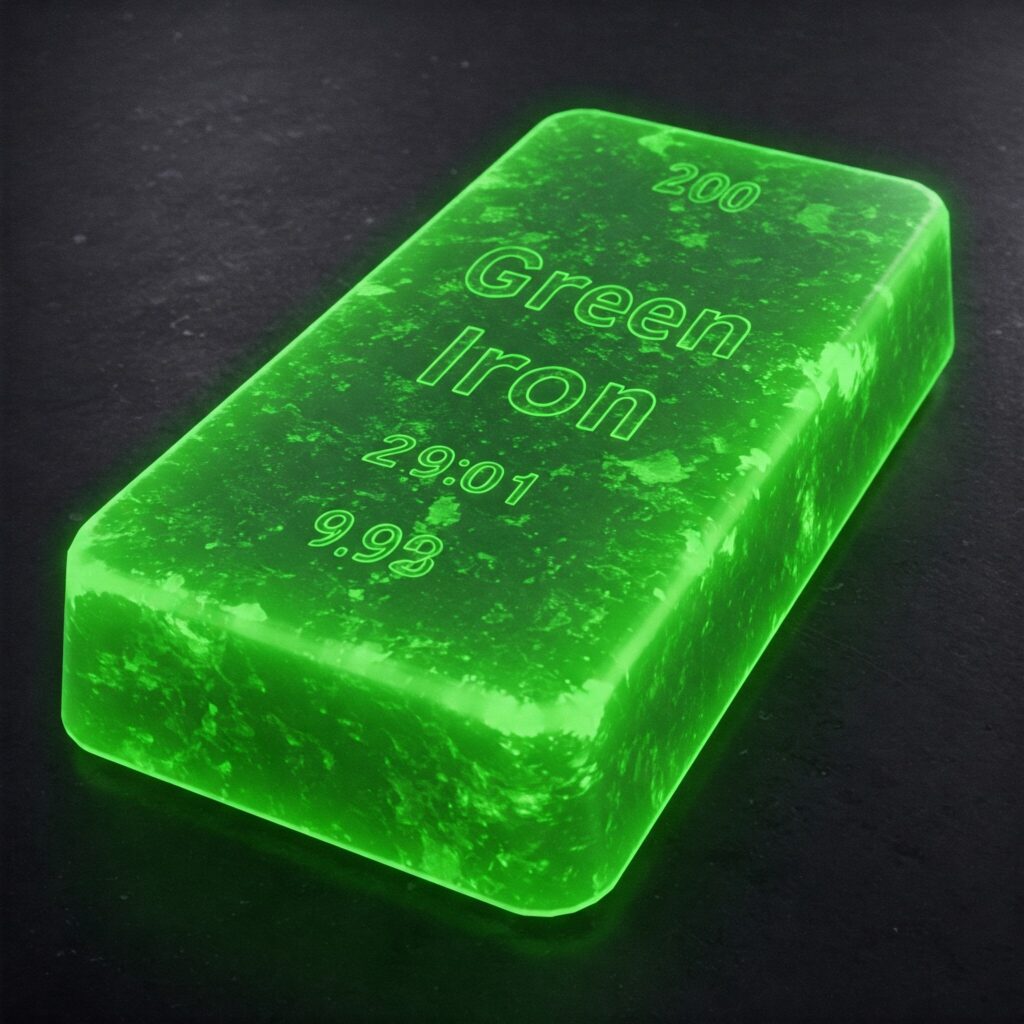
Image credit: Google Gemini
What is “green steel”? Simple. It’s a misnomer.
Iron in nature is rarely found alone. We mine its oxides as iron ores. These oxides need to be chemically reduced (gaining electrons = reduction) to take the Fe+2 and Fe+3 ions in the iron oxides, to Fe metal. And the oxygen needs to lose electrons to somebody else more willing to take them than iron was- or to be forced to give them up.
The traditional way we do that reduction is by (largely) reacting the iron in the ore with carbon monoxide, to produce carbon dioxide and iron metal. This is done either starting with coke made from coal in a blast furnace, or with synthesis gas (CO +H2) made from fossil gas in a device called a “Direct Reduction of Iron ” (DRI) furnace.
Once you have the iron, you can add scrap steel and make steel from it. In the US, about 70% of steelmaking is done in electric arc furnaces, so “steelmaking” is already substantially electric (not so in China…). Yes, there are lots of other steps in making steel products- soaking pits, annealing furnaces etc.- that are fired by fossil fuels- but that’s largely because the atmosphere remains a free or very cheap public sewer for the CO2 that is produced.
When people say “green steel”, what they mean generally is replacing the CO + H2 in a DRI unit with nearly pure electrolytic H2, made from water using renewable or low GHG electricity. Some CO is still required, but dramatically less than in a normal DRI furnace. What is also needed is electric heat, provided by resistance heaters, to make up for the lost heat of reaction. The product is still iron, not steel.
So what people mean, when they say “green steel”, is really “green iron”.
There are molten oxide (very high temperature) and aqueous electrolytic approaches to making iron, under development. Neither are going to be commercially ready for at least the next ten years, if they ever succeed.
Right now, “green iron” is one of the few ways we have of substantially reducing GHG emissions from far and away the most popular structural metal used on earth. However, because “green” electrolytic hydrogen is structurally expensive, so is green iron. While exciting projects like Stegra in Sweden are underway, these projects need either customers willing to pay a great deal more per pound of steel for it to be “green”, or massive carbon taxes or emission bans to make existing “black’ steel expensive or otherwise push it out of the market.
That’s the key problem: everybody likes the idea of decarbonization, but everybody also wants somebody ELSE to pay for it. The policy measures to make the decarbonization of steel, and many other key high-emission sectors of our economy, into reliable investments for billions of dollars of private money, remain elusive. And no, you simply can’t fix that by subsidizing green H2 production.
